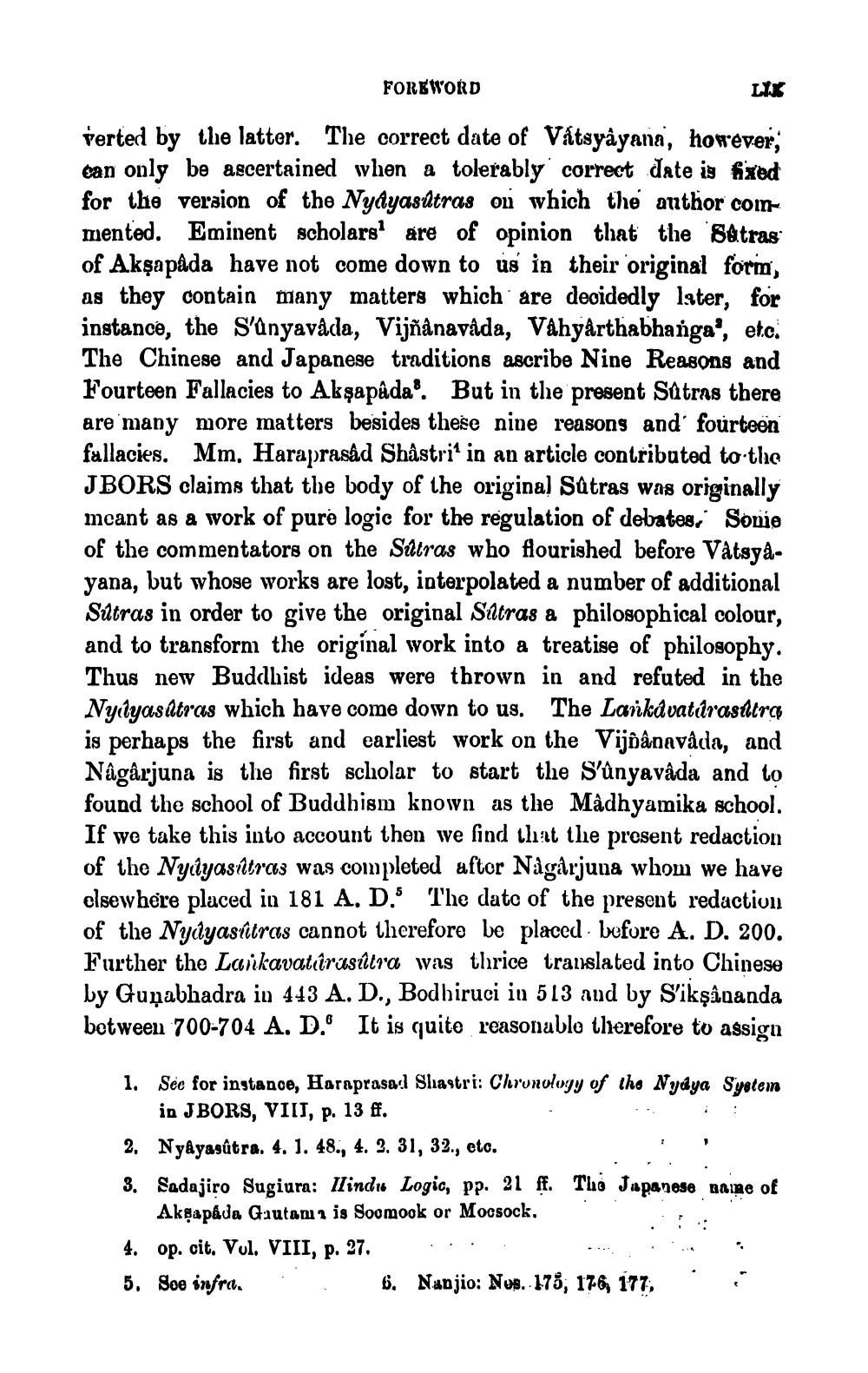________________
FOREWORD
LIS
verted by the latter. The correct date of Vatsyâyana, however, can only be ascertained when a tolerably correct date is fixed for the version of the Nydyasdtras on which the anthor com mented. Eminent scholars are of opinion that the S&tras of Akşapada have not come down to us in their original form, as they contain many matters which are decidedly later, for instance, the Sunyavada, Vijñanavâda, Vahyarthabhanga', etc. The Chinese and Japanese traditions ascribe Nine Reasons and Fourteen Fallacies to Akşapâda. But in the present Satrns there are many more matters besides these nine reasons and fourteen fallacies. Mm. Haraprasad Shastri' in an article contributed to the JBORS claims that the body of the original Satras was originally mcant as a work of pure logic for the regulation of debates, Sonie of the commentators on the Sutras who flourished before Vatsyayana, but whose works are lost, interpolated a number of additional Sutras in order to give the original Satras a philosophical colour, and to transform the original work into a treatise of philosophy. Thus new Buddhist ideas were thrown in and refuted in the Nyilyasátras which have come down to us. The Larkávatárasátra is perhaps the first and earliest work on the Vijôânavâda, and Nagarjuna is the first scholar to start the Sünyavâda and to found the school of Buddhism known as the Madhyamika school. If we take this into account then we find that the present redaction of the Nydyasútras was completed aftor Nagarjuna whom we have elsewhere placed in 181 A. D. The date of the present redaction of the Nydyasútras cannot therefore be placed before A. D. 200. Further the Laikavatarasitra was thrice translated into Chinese by Guņabhadra in 443 A. D., Bodhiruci iu 513 and by Sikşînanda between 700-704 A. D.' It is quite reasonable therefore to assign
1. See for instance, Haraprasad Shastri: Chronology of the Nydya System
in JBORS, VIII, p. 13 ff. 2. Nyâyasútra. 4. 1. 48., 4. 2. 31, 32., eto. 3. Sadajiro Sugiura: Ilindu Logic, pp. 21 ff. The Japanese anime of
Aknapáda Gautama is Soomook or Mocsock. 4. op. cit. Vul. VIII, p. 27. 5. Soe infra. . 6. Nanjio: Nup. 175, 176, 177, .




